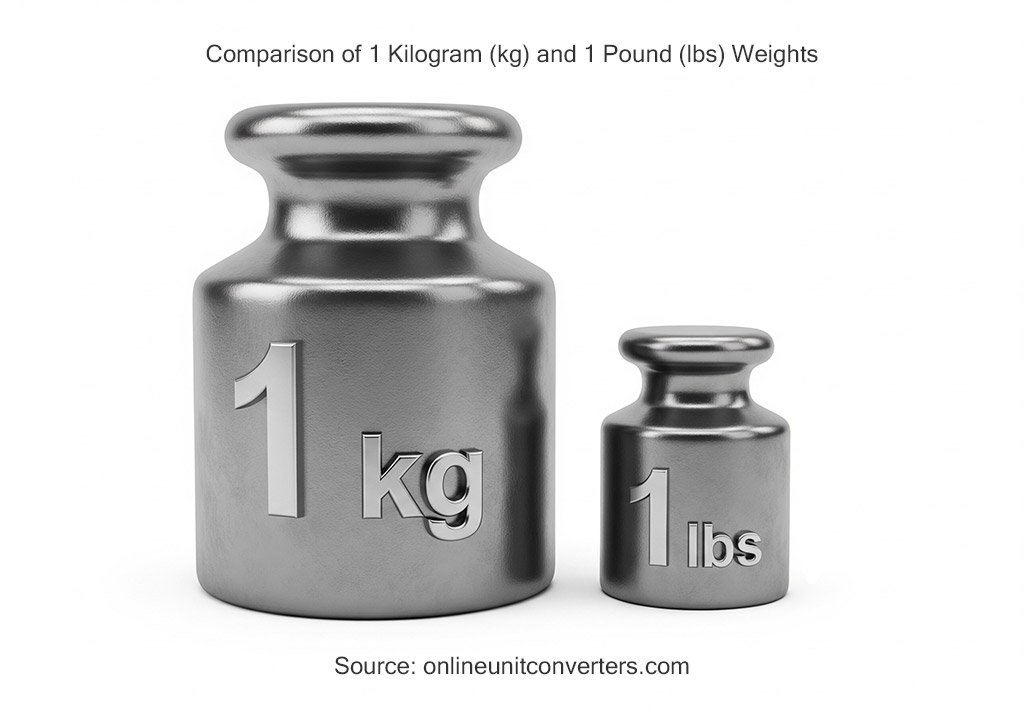Kilograms explained
The kilogram is the base unit of mass in the International System of Units (SI). One kilogram approximately represents the mass of one liter of water at its maximum density, which occurs at a temperature of about 4°C. This relationship is not coincidental but historical. Its precise definition relies on fundamental constants of nature, ensuring unparalleled accuracy and stability in mass measurement. The kilogram is unique among SI units as it includes a prefix ("kilo-") in its name, signifying 1,000 grams.
Symbol
The symbol for the kilogram is kg.
Standardized Unit System
The kilogram is part of the International System of Units (SI) and serves as the base unit for mass. Below is a table of some related units within the SI system:
| Unit | Symbol | Description |
|---|---|---|
| Metric Ton | t | 1,000 kilograms |
| Kilogram (Base Unit) | kg | The base unit of mass in SI |
| Gram | g | 1/1,000 of a kilogram |
| Milligram | mg | 1/1,000,000 of a kilogram |
It's important to note that while these units are primarily used for mass, they are often used interchangeably with weight in everyday contexts on Earth, where the acceleration due to gravity is relatively constant. However, strictly speaking, weight is a force and would be measured in newtons (N) in the SI system
Tools to Measure Kilograms
Mass in kilograms can be measured with various instruments:
- Kibble Balance: A highly precise instrument used in metrology laboratories.
- Weighing Scales: Commonly used in households, industries, and scientific research.
- Digital Balances: Provide accurate readings for laboratory and commercial use.
Below an image of two common measuring weights made out of metal, one labeled "1 kg" and the other labeled "1 lbs", illustrating the size difference between a kilogram and a pound.

Origin of the Kilogram
The kilogram originated during the French Revolution in 1795 as the mass of one liter of water at its maximum density. In 1799, it was formalized using a platinum artifact called the "Kilogramme des Archives." Later, in 1889, the International Prototype Kilogram (IPK), made from platinum-iridium, became the global standard. In 2019, the kilogram was redefined based on Planck's constant to ensure greater precision and universality.
FAQs
Why was the kilogram redefined?
The kilogram was redefined in 2019 to base it on fundamental constants like Planck’s constant instead of a physical object. This ensures long-term stability and precision.
How does a Kibble balance work?
A Kibble balance measures mass by balancing gravitational force with an electromagnetic force generated by an electric current. It replaces reliance on physical objects like the IPK.
What is the difference between mass and weight?
Mass (measured in kilograms) refers to the amount of matter in an object, while weight (measured in newtons) is the force exerted by gravity on that object.
How do I convert kilograms to other weight and mass units?
Use the links below for easy conversions from kilograms to other weight and mass units available on this website.
- Kilograms to grams
- Kilograms to milligrams
- Kilograms to pounds
- Kilograms to ounces
- Kilograms to metric tons
- Kilograms to short tons
- Kilograms to long tons
- Kilograms to carats
- Kilograms to atomic mass units
- Kilograms to quettagrams
- Kilograms to ronnagrams
- Kilograms to yottagrams
- Kilograms to zettagrams
- Kilograms to exagrams
- Kilograms to petagrams
- Kilograms to teragrams
- Kilograms to gigagrams
- Kilograms to megagrams
- Kilograms to hectograms
- Kilograms to dekagrams
- Kilograms to decigrams
- Kilograms to centigrams
- Kilograms to micrograms
- Kilograms to nanograms
- Kilograms to picograms
- Kilograms to femtograms
- Kilograms to attograms
- Kilograms to zeptograms
- Kilograms to yoctograms
- Kilograms to rontograms
- Kilograms to quectograms
- Kilograms to daltons
- Kilograms to kilopounds
- Kilograms to kips
- Kilograms to slugs
- Kilograms to stones (us)
- Kilograms to stones (uk)
- Kilograms to troy pounds
- Kilograms to assay tons (us)
- Kilograms to assay tons (uk)
- Kilograms to kilotons (metric)
- Kilograms to quintals (metric)
- Kilograms to hundredweights (us)
- Kilograms to hundredweights (uk)
- Kilograms to quarters (us)
- Kilograms to quarters (uk)
- Kilograms to pennyweights
- Kilograms to scruples
- Kilograms to grains
- Kilograms to gamma
- Kilograms to talents (biblical hebrew)
- Kilograms to mina (biblical hebrew)
- Kilograms to shekels (biblical hebrew)
- Kilograms to bekahs (biblical hebrew)
- Kilograms to gerahs (biblical hebrew)
- Kilograms to talents (biblical greek)
- Kilograms to mina (biblical greek)
- Kilograms to tetradrachmas (biblical greek)
- Kilograms to didrachmas (biblical greek)
- Kilograms to drachmas (biblical greek)
- Kilograms to denarii (biblical roman)
- Kilograms to planck mass
- Kilograms to electron rest mass
- Kilograms to proton rest mass
- Kilograms to neutron rest mass
- Kilograms to muon rest mass
- Kilograms to tau rest mass
- Kilograms to deuteron rest mass
- Kilograms to earth's mass
- Kilograms to sun's mass





